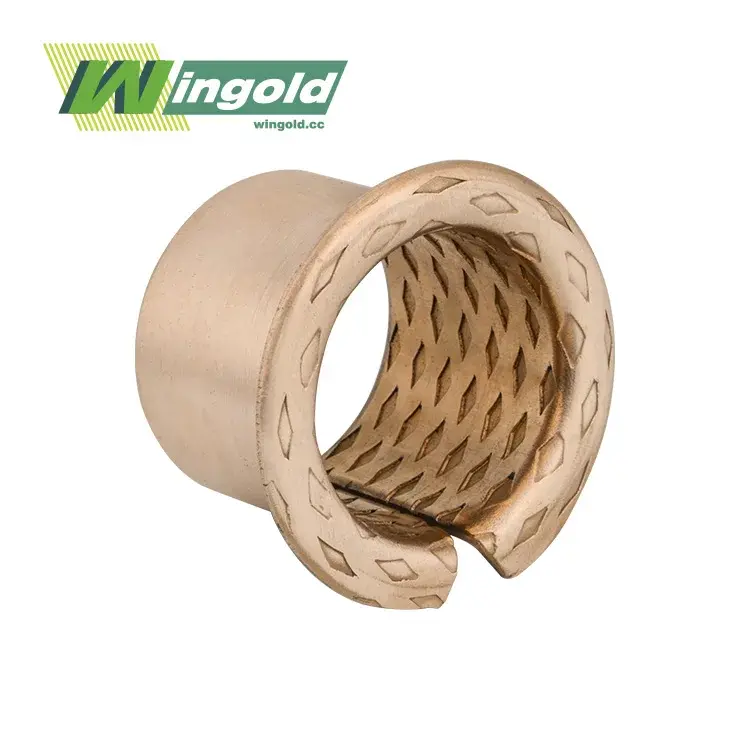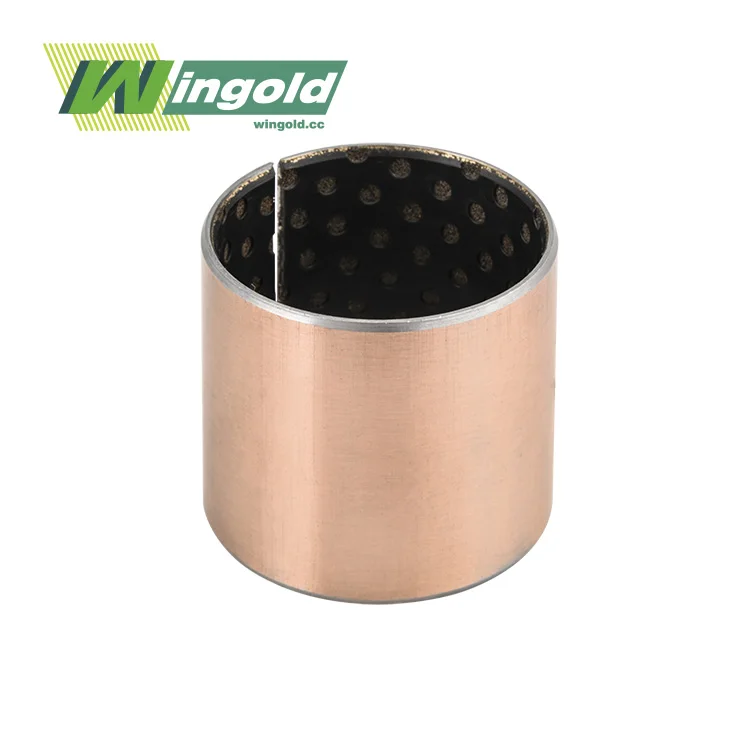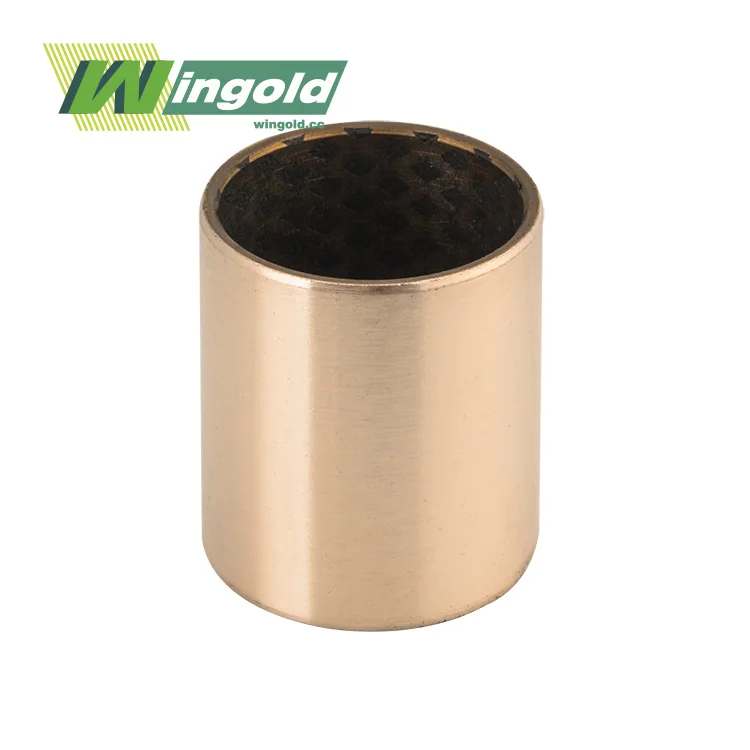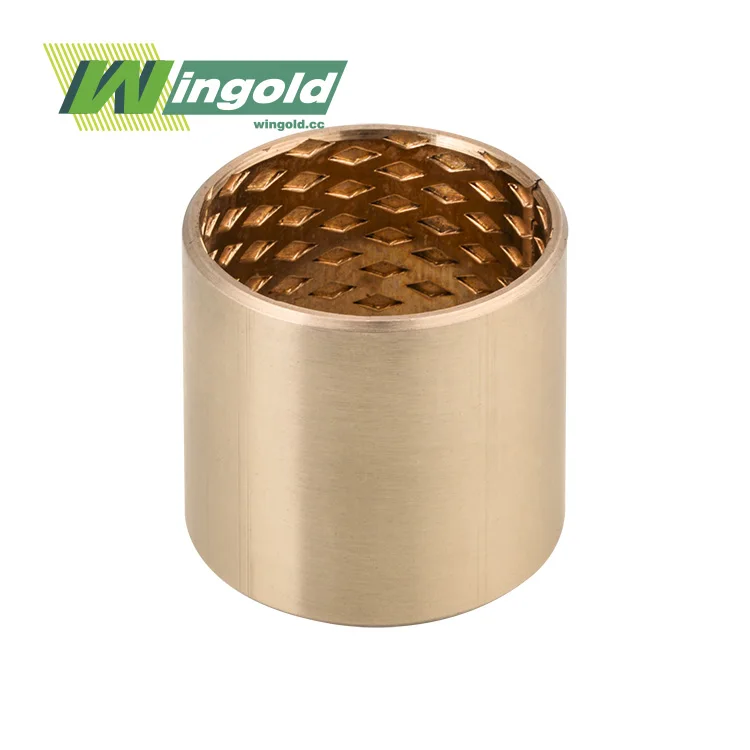The Chemistry Behind Bronze's Green Transformation
To truly understand why bronze turns green, we need to delve into the chemistry behind this fascinating process. Bronze, typically an alloy of copper and tin, undergoes a series of chemical reactions when exposed to the elements. This transformation is particularly relevant when considering components like the 1 2 bore bronze bushing, which may be subject to various environmental conditions depending on its application.
The Role of Copper in Bronze Patination
Copper, the primary component in bronze, is the main culprit behind the green coloration. When exposed to air and moisture, copper undergoes oxidation, forming a thin layer of copper oxide. This initial reaction creates a reddish-brown color. Over time, as the copper continues to react with carbon dioxide and sulfur compounds in the air, it forms various copper carbonates and sulfates, including the green-colored copper carbonate known as verdigris.
Factors Influencing the Rate of Green Patina Formation
Several factors can affect how quickly and extensively bronze develops a green patina:
- Environmental conditions: High humidity, salt air, and pollution can accelerate the patination process.
- Alloy composition: The specific ratio of copper to tin (and other metals) in the bronze can influence its susceptibility to patination.
- Surface treatment: Polished surfaces may resist patination longer than rough ones.
- Exposure to specific chemicals: Certain substances can speed up or alter the patination process.
Understanding these factors is crucial for manufacturers of bronze components, including 1 2 bore bronze bushings, as it allows them to implement appropriate measures to control or prevent unwanted patination.
Implications of Green Patina on Bronze Bushings
While the green patina on bronze statues and architectural elements is often considered aesthetically pleasing, its presence on industrial components like bronze bushings can have significant implications. Let's explore how this natural process affects the performance and longevity of bronze bushings, with a specific focus on the 1 2 bore bronze bushing.
Impact on Bushing Performance
The formation of a green patina on a bronze bushing can potentially affect its performance in several ways:
- Dimensional changes: As the patina forms, it can slightly alter the dimensions of the bushing, potentially affecting its fit and function.
- Surface roughness: The patina layer may increase surface roughness, potentially impacting the bushing's friction characteristics.
- Wear resistance: While the patina can provide some protection against further corrosion, it may not offer the same wear resistance as the original bronze surface.
- Heat dissipation: The patina layer might affect the bushing's ability to conduct and dissipate heat effectively.
For precision components like the 1 2 bore bronze bushing, even small changes in these characteristics can significantly impact performance and longevity.
Corrosion Protection vs. Mechanical Integrity
Interestingly, the green patina that forms on bronze can act as a protective layer, slowing down further corrosion of the underlying metal. However, in the context of mechanical components like bushings, this protective quality must be balanced against the need for maintaining mechanical integrity and precise dimensions.
For instance, a 1 2 bore bronze bushing is designed to provide a specific clearance and surface finish for optimal performance. The formation of a patina layer, while potentially protective, could compromise these carefully engineered specifications.
Preventing Green Discoloration in Bronze Bushings
Given the potential impacts of patination on bronze bushing performance, manufacturers employ various strategies to prevent or minimize green discoloration. These methods are particularly important for maintaining the integrity and functionality of precision components like the 1 2 bore bronze bushing.
Surface Treatments and Coatings
One of the most effective ways to prevent green discoloration in bronze bushings is through the application of surface treatments and coatings. These can include:
- Anodizing: This electrochemical process creates a durable, corrosion-resistant oxide layer on the surface of the bronze.
- Plating: Applying a thin layer of a more corrosion-resistant metal, such as nickel or chrome, can protect the bronze surface.
- Polymer coatings: Specialized polymer coatings can provide a barrier against moisture and corrosive elements.
- Oil impregnation: For self-lubricating bushings, the pores of the bronze can be impregnated with oil, which helps prevent direct contact with corrosive elements.
These treatments not only prevent green discoloration but can also enhance other properties of the bushing, such as wear resistance and lubricity.
Alloy Selection and Composition Control
The composition of the bronze alloy itself can significantly influence its tendency to form a green patina. Manufacturers of high-quality bushings, including 1 2 bore bronze bushings, carefully control the alloy composition to achieve the desired balance of properties. Some strategies include:
- Increasing tin content: Higher tin content in bronze can reduce its susceptibility to patination.
- Adding other alloying elements: Small amounts of elements like nickel or aluminum can improve corrosion resistance.
- Using specialized bronze alloys: Some proprietary bronze alloys are specifically formulated for improved corrosion resistance in challenging environments.
By fine-tuning the alloy composition, manufacturers can create bronze bushings that resist green discoloration while maintaining other critical performance characteristics.
Environmental Control and Maintenance Practices
In addition to material and surface treatments, proper environmental control and maintenance practices can significantly extend the life of bronze bushings and prevent unwanted green discoloration. These practices may include:
- Controlling humidity and temperature in the operating environment
- Regular cleaning and inspection of bushings
- Proper lubrication practices to minimize exposure to corrosive elements
- Using protective coverings or seals when bushings are not in use
For applications using components like the 1 2 bore bronze bushing, implementing these practices can help maintain optimal performance and appearance over extended periods.
Conclusion
While bronze's tendency to turn green is a natural and often desirable characteristic in many applications, it presents unique challenges in the context of precision mechanical components like bushings. Understanding the chemistry behind this process and its implications for bushing performance is crucial for both manufacturers and users of bronze bushings.
Through careful material selection, advanced surface treatments, and appropriate maintenance practices, it's possible to harness the excellent properties of bronze while minimizing unwanted green discoloration. This is particularly important for precision components like the 1 2 bore bronze bushing, where maintaining exact dimensions and surface characteristics is critical to performance.
For more information about high-quality bronze bushings and custom solutions for your specific applications, please don't hesitate to contact us at info@wingold.cc. Our team of experts is ready to help you find the perfect bushing solution for your needs, ensuring optimal performance and longevity in your mechanical systems.
FAQ
How long does it take for bronze to turn green?
The time it takes for bronze to turn green can vary greatly depending on environmental factors. In highly corrosive environments, visible green patina can form in a matter of months, while in more benign conditions, it may take years.
Can the green patina on bronze be removed?
Yes, green patina can be removed from bronze using various chemical or mechanical methods. However, for precision components like bushings, it's generally better to prevent patina formation rather than trying to remove it.
Are there any benefits to the green patina on bronze?
While the green patina can provide some protection against further corrosion in decorative applications, it's generally undesirable in precision mechanical components like bushings due to its potential impact on dimensions and performance.




